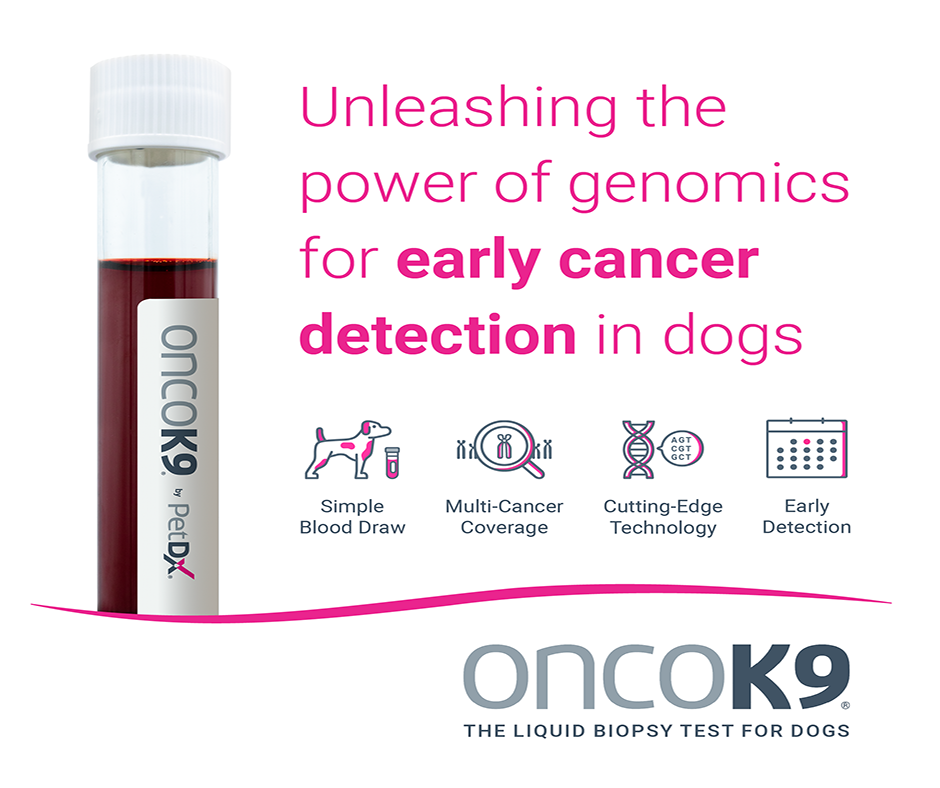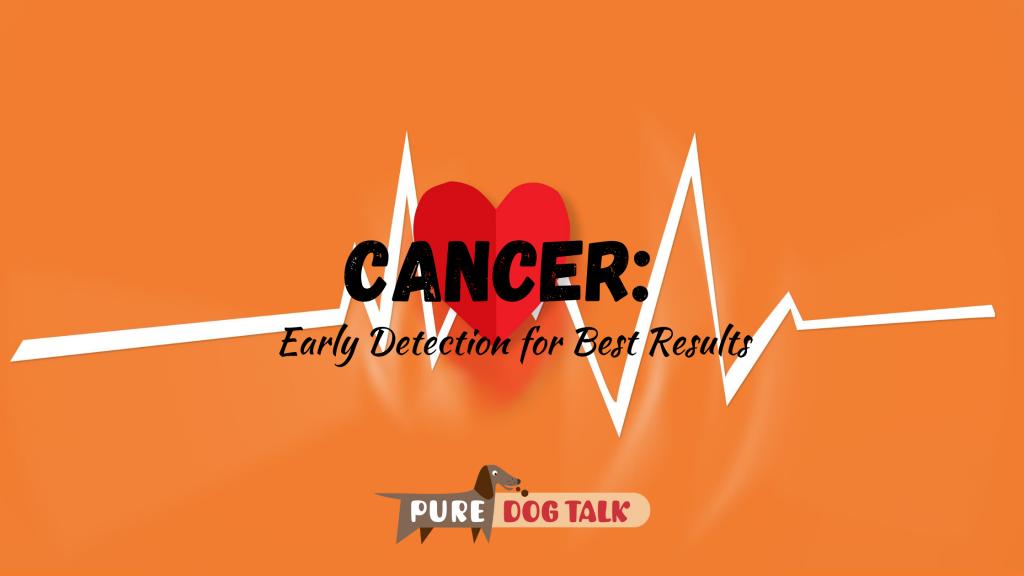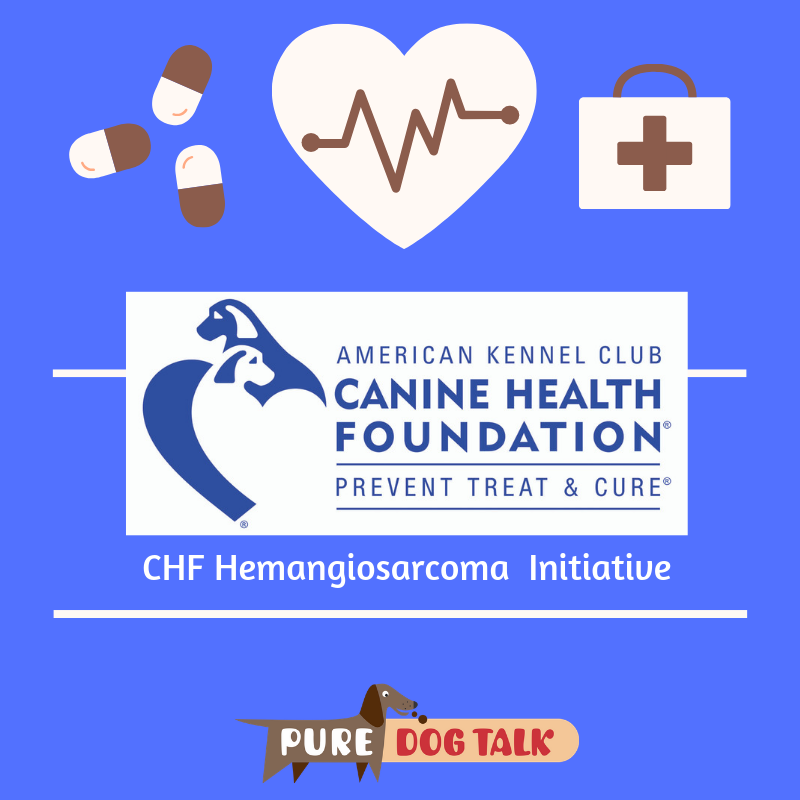624 – At-Home Early Cancer Detection Test Hits the Market
At-Home Early Cancer Detection Test Hits the Market
Chan Namgong, founder of Oncotect, joins host Laura Reeves for a very personal discussion of the value of early cancer detection for our dogs.
Namgong launched his company in 2019 in the aftermath of his mother’s cancer diagnosis. He already knew that dogs can detect human cancer by scent. But then he learned about a group of scientists that discovered that small nematodes can detect cancerous metabolites in urine in human medicine.
“What’s amazing about these small nematodes is that they have very high sense of smell,” Namgong said. “They have more olfactory receptors than dogs, despite their small size. So what we have done is we’ve developed a platform where we are using (nematodes) to detect cancerous metabolites in dogs’ urine that contains the cancerous metabolites.
“(Nematodes) are small worms, and the scientific name of them is C. elegans. And C. elegans is actually, you know, if you are a scientist or biologist, it’s a model organism. It’s widely used in different disciplines of science. In pharmacology, chemistry, biology, you know, cancer cells, stem cell research, environmental study, because we know everything about these worms. In fact, C. elegans was the very first multi-cell organism that was ever DNA sequenced. And the way we utilize them is we can actually measure the intensity of the olfactory neuron in their head.
“We can categorize pets as low, moderate or high risk of cancer. Oncotect is a screening test, not a diagnostic test. So, this is meant to be proactive and preventive measure. And then if there’s any risk, moderate or high risk, we’ll bring you back to your veterinarian for further consultation, diagnostic tests such as x -rays or ultrasound to really confirm or deny a cancer suspicion or to identify the type and location.
“Prevention of cancer is almost impossible because we don’t know what’s really truly causing cancer. But your best strategy is find it early and treat it quickly. Diagnosing a cancer is like a putting a puzzle together. You’ve got to bring different pieces of information to really look at a big picture.
“We have primarily focused on the four most common treatable canine cancers. They are lymphoma, melanoma, hemangiosarcoma and mast cell tumors. And the reason why we focus on those four is because just due to the limited resources that we have.
“We’ve tested over 700 dogs in the last year or so. And among those 700 dogs, we have detected TCC, bladder, prostate, liver, soft tissue. So we’ve detected other cancer types, but the reason why we are not making claims for them is because we haven’t run a large enough sample size to publish any scientific paper on them, which we plan to do this year.”
534 — Changing the Conversation on Cancer Diagnosis in Dogs
Changing the Conversation on Cancer Diagnosis in Dogs
Dr. Angelo Marco, DVM and Dr. Andi Flory, DVM join host Laura Reeves for an exciting conversation about advances in early cancer detection. PetDx’s OncoK9 test is able to “identify a biomarker of cancer that comes from cancer cells” from a simple blood draw, according to Dr. Flory.

Dr. Andi Flory, DVM, Chief Medical Officer at PetDX.
Flory, Chief Medical Officer at PetDx, said the OncoK9 test has the potential to revolutionize our ability to detect cancer in patients, potentially even before they start to show signs and symptoms.
While the blood test identifies a variety of cancers, it is most successful at finding the “big three:” Lymphoma, hemangiosarcoma and osteosarcoma.
“Those big three,” Flory said, “that detection rate is really high. It’s 85% and those are the most aggressive cancers that we see in dogs. So the fact that we have the potential to identify those really aggressive cancers sooner, it’s just amazing.
“The way that would kind of work, is if you think about dogs that are at high risk of cancer because of they’re getting older, for example, we know that the risk of cancer increases with age. Or because of their breed. You’re certainly aware there are some breeds that just get a lot of cancer, unfortunately. If we think about testing those individuals as a screening test, like as an annual test before they’re showing any clinical signs you know while they’re still healthy. If we can identify cancer while they’re still feeling good, then we may have a better chance of controlling it longer term.
“I think about the cases that we get almost universally when we discover hemangiosarcoma. It’s because the tumor is bleeding or it’s already spread and the metastatic lesions are bleeding and that often results in a middle of the night visit to the emergency room. It’s a snap decision. Maybe your dog looked normal that morning and then all of a sudden you’re in the ER being told your dog has a tumor on the spleen and it’s bleeding and we need to do emergency surgery and we need to do a blood transfusion and there’s really only one decision that you can make right now. It’s shocking. It’s traumatic. It’s painful for the dog. It’s all of those things and it happens so unexpectedly and it’s so emotional.”

Dr. Angelo Marco, DVM and his Border Terrier at Palm Springs Kennel Club.
“The important thing to know,” Marco said, “is that when we see a cancer signal on this test, it’s an indication of malignant tumor cells in the body right now. It’s not something that they were cured of five years ago and it’s not a predisposition test, so it’s not something that is predicting, it is something that is there in the body right now. So that really highlights the importance of going forward on that “cancer hunt” to find where is this cancer signal is coming from.”
Be sure to listen to today’s episode in full and visit PetDx for additional information.
423 — Cancer Specialist Provides Important Tips on Early Detection
244 – CHF Hemangiosarcoma Initiative and Matching Funds
Hemangiosarcoma Strikes Quickly and With No Warning
Canine Health Foundation (CHF) CEO Dr. Diane Brown talks with me about the most current research into hemangiosarcoma. CHF is funding a major initiative dedicated to moving the needle on this deadly disease.
Hemangiosarcoma is an aggressive, silent killer, Brown said. This particular cancer is specific to dogs and originates in blood vessels. Primary sites in which hemangio will present are the spleen and heart, Brown noted, owing to the abundance of blood vessels in those organs.
“These cancers grow quickly and quietly,” Brown said. “Once people know the dog has hemangio, generally the tumor has ruptured and the dogs bleed internally.”
No definitive genetic connection
Removing the cancer doesn’t cure the disease, Brown said. She added that all of the treatments tried over time have not improved overall survival time. Hemangio is a cancer seen often in large breed dogs, but Brown noted veterinarians are seeing it more and more frequently in all sizes and mixed breed dogs as well.
“There are higher risk breeds,” Brown said “but there is no direct, definitive genetic connection.” She added that research has so far not been able to identify a “hemangiosarcoma gene.”
“What we really need is a way to do an earlier diagnosis,” Brown noted.
To that end, CHF is spending resources investigating early diagnosis options — whether a blood test, liquid biopsy, genetic test. They are trying to find a way to diagnose the disease when it is at a “low cellularity.”
A major matching grant from AKC for $250,000 last year has been met with additional funds from the Golden Retriever Foundation, Flat Coated Retriever Foundation, American German Shepherd Dog Charitable Foundation and more.
Study participation opportunities
Owners and breeders who are interested in participating in various CHF studies are encouraged to visit the website and peruse the active studies currently seeking participation.
Join CHF in supporting these important research initiatives by attending Canines and Cocktails Thursday, 12/13 at the Rosen Center hotel in Orlando, FL. Tickets are available at the CHF booth at the dog show.
Listen to previous episodes with Dr. Brown on epilepsy, tick borne diseases and theriogenology residencies
231 – Researching Connections Between Ticks and Cancer, Other Disease
Research shows growing problem with ticks
Ticks are creepy crawly creatures we all love to hate. But they are also dangerous disease vectors transmitting deadly organisms. Dr. Diane Brown, CEO of the AKC Canine Health Foundation, shared incredibly
valuable information about what her organization is doing to lead the fight against these diseases.
CHF funded research has identified a class of tick-borne organisms, called Bartonella. Bartonella invades the host’s blood vessels and can cause inflammation in the heart.
“What if that (bartonella infection) is the early trigger that leads to chronic inflammation in the blood vessels,” Brown posits, “potentially leading to the development of cancer.”
Current CHF funded research is looking at bartonella in association with hemangiosarcoma, literally cancer of the blood vessels.
“It’s a little controversial,” Brown said “but there’s a lot of impetus driving the research in this direction.”
Tick-borne organisms associated with deadly disease
The Foundation’s research also has shown immune mediated hemolytic anemia can be associated with tick borne disease.
“It’s critical to test these dogs for an underlying tick borne infection before treating them with steroids that can just exacerbate the problem,” Brown said.
The CHF initiatives are working on broad spectrum of vectors that impact the health of dogs, Brown noted. She added that new tick species and diseases are discovered every year.
“Tick preventives are key to keeping your dog healthy,” Brown said. With the rising number of “co-infections” she noted that testing for more than one disease is imperative.
CHF has a three-prong approach to this burgeoning crisis. The non-profit funds research focused on diagnosis, new therapies for treatment and prevention.
Hear more on this topic with CHF Board Member Susan Hamil:
Additional Resources from CHF:
CHF Tick-Borne Disease Research Initiative landing page; includes grants, research publications, webinars, podcasts, news, and other resources
White paper:
http://www.akcchf.org/canine-health/sporting-field-dogs/Tick-borne-Disease.pdf
Lyme Disease Fact Sheet:
Ticks and Zoonotic Disease Webinar with Dr. Ed Breitschwerdt:
https://www.vetvine.com/article/274/akcchf-tick-borne-diseases-event
Diane Brown, DVM, PhD, Dipl. ACVP, is the Chief Executive Officer and Chief Scientific Officer for the AKC Canine Health Foundation (CHF). She joined CHF in August 2015, and oversees operations and scientific programs from its Raleigh, NC headquarters. Her role is to cultivate and execute the Foundation’s research and education strategy in collaboration with its Board of Directors, Scientific Review Committee, external collaborators, principal investigators and staff to ensure strategic, responsible, and innovative application of donor funds to uphold the Foundation’s Mission to advance canine health.
Dr. Brown is a board-certified veterinary clinical pathologist who holds a DVM and PhD in pathology from Colorado State University. As an independent investigator and comparative pathologist, Dr. Brown served as a member of the faculty at Harvard Medical School, as director of the Comparative Clinical Pathology Laboratory at Massachusetts General Hospital, and as consulting pathologist at the University of Colorado. She previously served as Chief Scientific Officer for Morris Animal Foundation, and currently holds an affiliate faculty position in the Department of Molecular and Comparative Pathobiology at Johns Hopkins University School of Medicine. She has held prior affiliate faculty appointments in the veterinary schools at Tufts Cummings School of Veterinary Medicine, Colorado State University and Purdue University.






